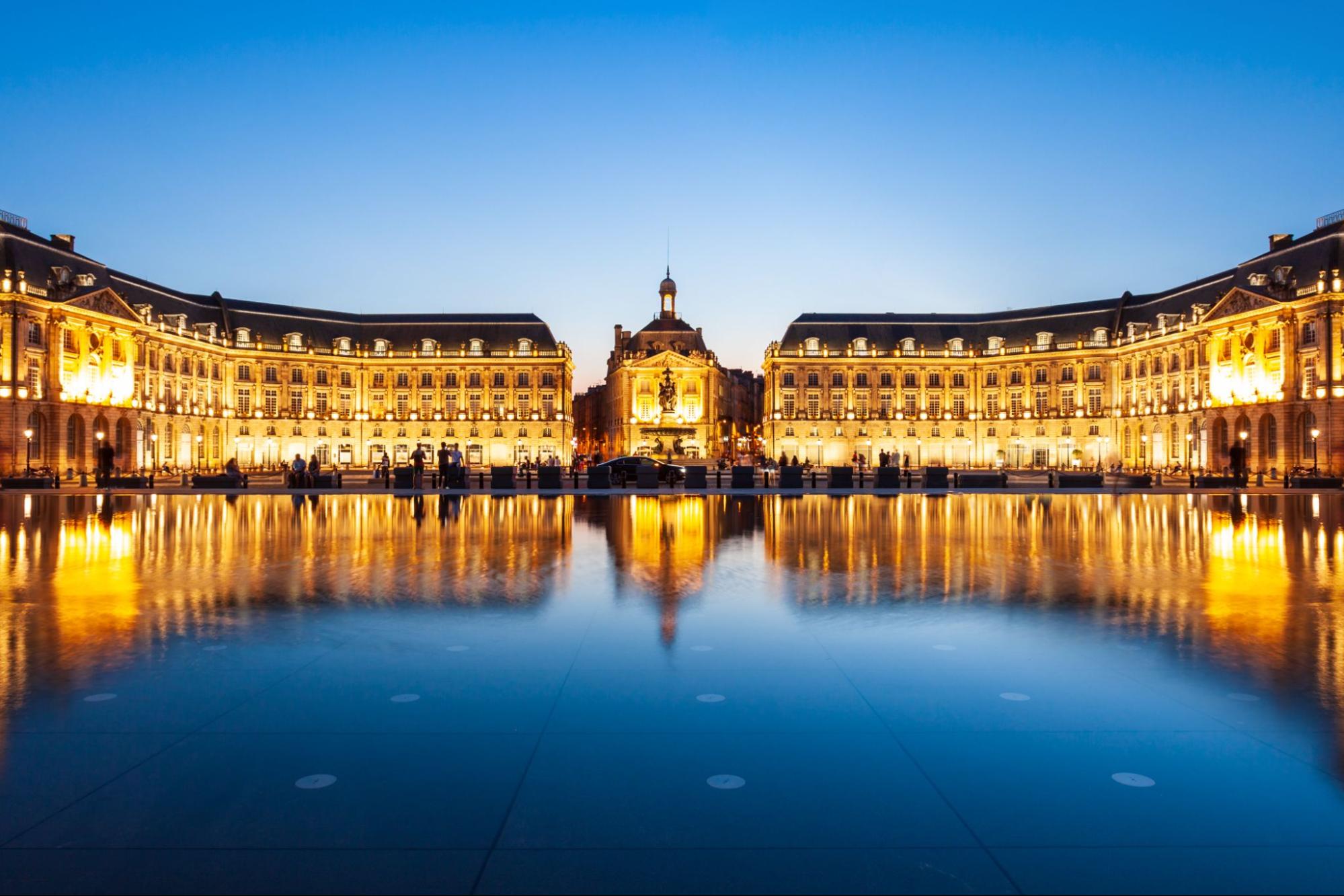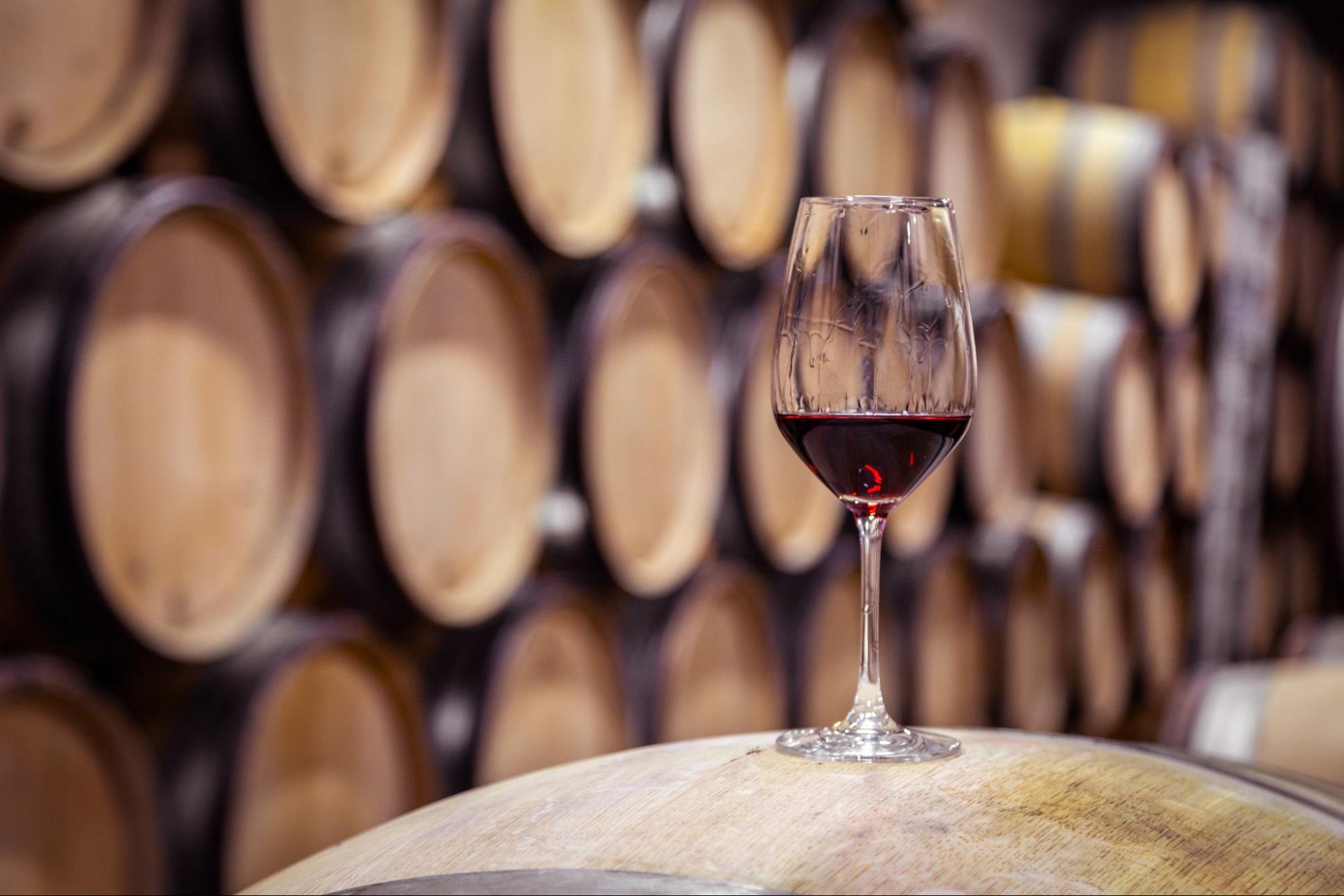- Wine Color/Type
- Top Occasions
- Unique Wines
- Surprise Me!
Mythbusting the La Place de Bordeaux and En Primeur
Every spring the wine industry drops the terms “La Place de Bordeaux” and “En Primeur.” In this short article, we will be covering the basics of this dynamic time of the year and debunk the myth of these fancy words.
The most famous sight in Bordeaux, the Place de la Bourse. (Photo: saiko3p/stock.adobe.com)
La Place de Bordeaux is not a physical place. It is not a location where you can take a selfie, drink and taste some wine or visit as a tourist. It is a hub of merchants, who sell wines from entry level to high end quality wines throughout the world, and connect businesses. The Place de Bourse in Bordeaux was built in the 18th century and is one of the city's highlights for selfies. Yet, it is not the mysterious La Place.
The La Place de Bordeaux works similar to the American Three-Tier-System. There is the producer, the broker, traditionally called ‘courtier’ and the merchant. The courtiers work hand in hand with the wineries and allocate volumes and prices, managing scarcity and the distribution of the wines. The most sought after wines, especially the Premier Cru Classée wines and second growths experience the highest demand.
Today, La Place distributes its wines into over 100 countries, employing an efficient distribution system that has expanded beyond Bordeaux's borders. Brands like Penfold’s from Australia and high-end German Rieslings, such as those from Markus Molitor in the Mosel region, are now traded through this platform. It's fascinating to note that some distributors often own large, temperature-controlled warehouses, providing certificates to merchants. This infrastructure ensures that wines remain in optimal condition during storage and transportation, guaranteeing their quality upon arrival.
What is En Primeur?
En Primeur, a term deeply rooted in Bordeaux's winemaking tradition, refers to the practice of selling an allocation of the wine while it's still maturing in barrels. This concept originated in the 18th century as a means for merchants to secure their supply for the upcoming year, allowing wineries to generate a positive cash flow early in the production process.
Typically occurring at the end of April each year, En Primeur involves the Châteaux inviting trade professionals and journalists to taste the previous vintage. It's an intensive period where attendees may sample over a thousand wines in just a few days. Professional wine buyers are given a brief window, usually around 30 minutes per winery, assessing the quality and potential of each wine for their businesses.
The unfinished wines are sold, as they are still maturing in the Château. (Photo: Тимур Конев/stock.adobe.com
One of the primary advantages of buying En Primeur is the potential for lower prices compared to purchasing the bottled wine after release. However, En Primeur prices are subject to market dynamics and can fluctuate based on factors such as vintage quality, demand, ratings, and global economic conditions.
The En Primeur campaign in 2023 sparked controversy as prices surged by 25% or more for some fine wines, prompting concerns among consumers and industry professionals alike. However, the current landscape sees a shift, with lower demand for Bordeaux wines leading to a slight decrease in prices, much to the delight of wine enthusiasts.
Today, many merchants sell their En Primeur wines through their online platforms. It typically involves a waiting period of 12 to 18 months before the wines will be delivered to the doorstep. However, some merchants opt to list the wines as soon as they arrive, capitalizing on potential price increases. It offers the advantage that wine lovers can secure rare bottles and formats, including magnum bottles. That can well be worth the wait!
Businesses now have access to real-time price tracking through trading platforms, similar to stock markets, enabling them to monitor developments and make informed investment decisions. The discount offered on En Primeur wines compared to the released vintage usually range from 10% to 30%, making it an attractive option. Whether it's worth the wait versus purchasing already existing vintages ultimately boils down to personal preference and availability.
One advantage of purchasing released vintages is the availability of existing ratings and reviews from other wine lovers, reducing the risk of uncertainty regarding the wine's quality and taste. However, for those who enjoy the thrill of anticipation and the potential for acquiring sought-after wines at a discount, En Primeur remains a great option. Some say, waiting is part of the pleasure.
Interestingly, some leading wineries have left the En Primeur system, preferring to sell their wines only when they are matured. Notable producers include Pauillac's Château Lafite and Sauternes Château d’Yquem.
Peter Douglas
Latest articles


